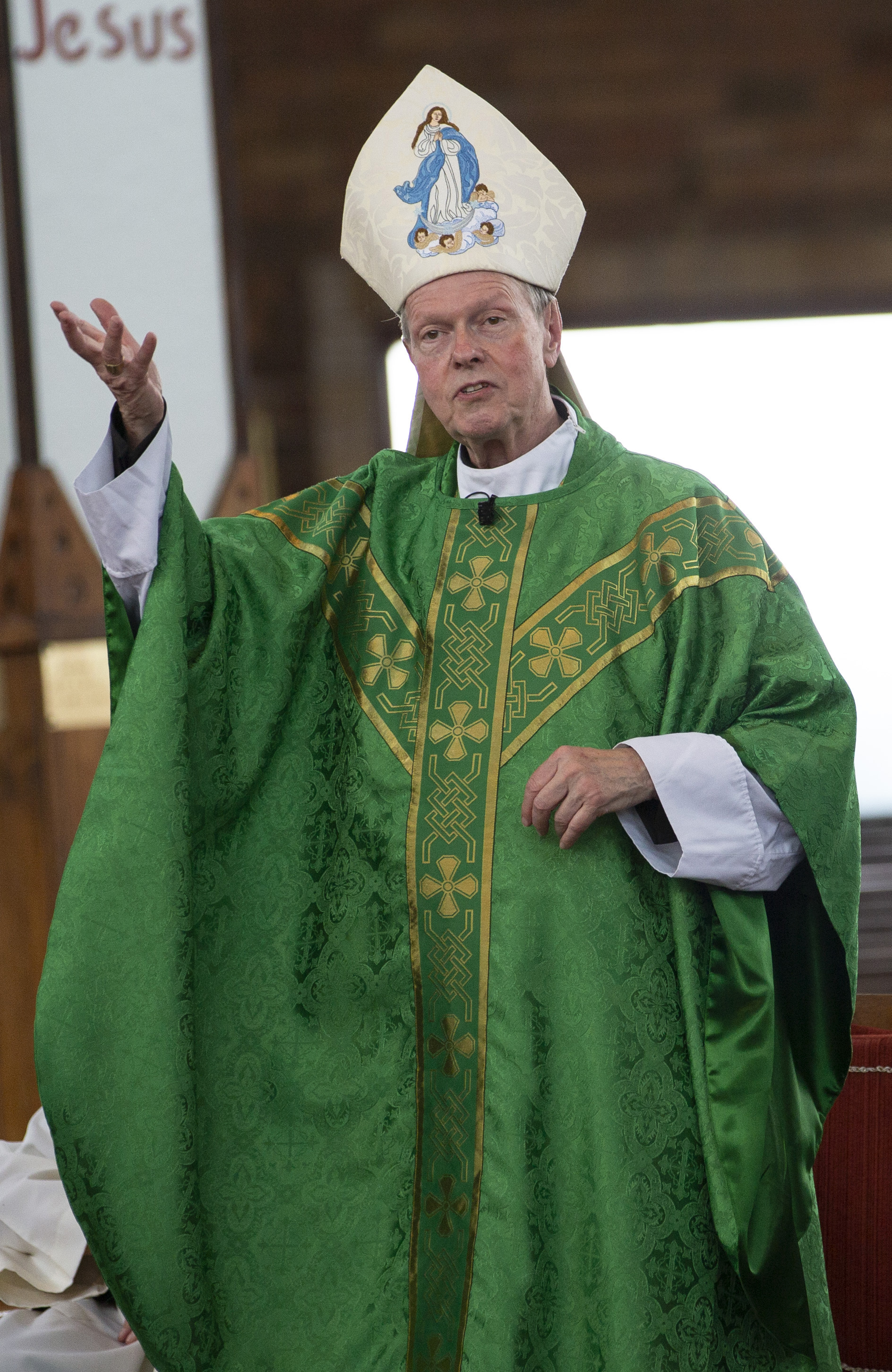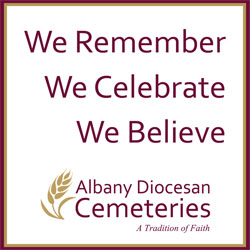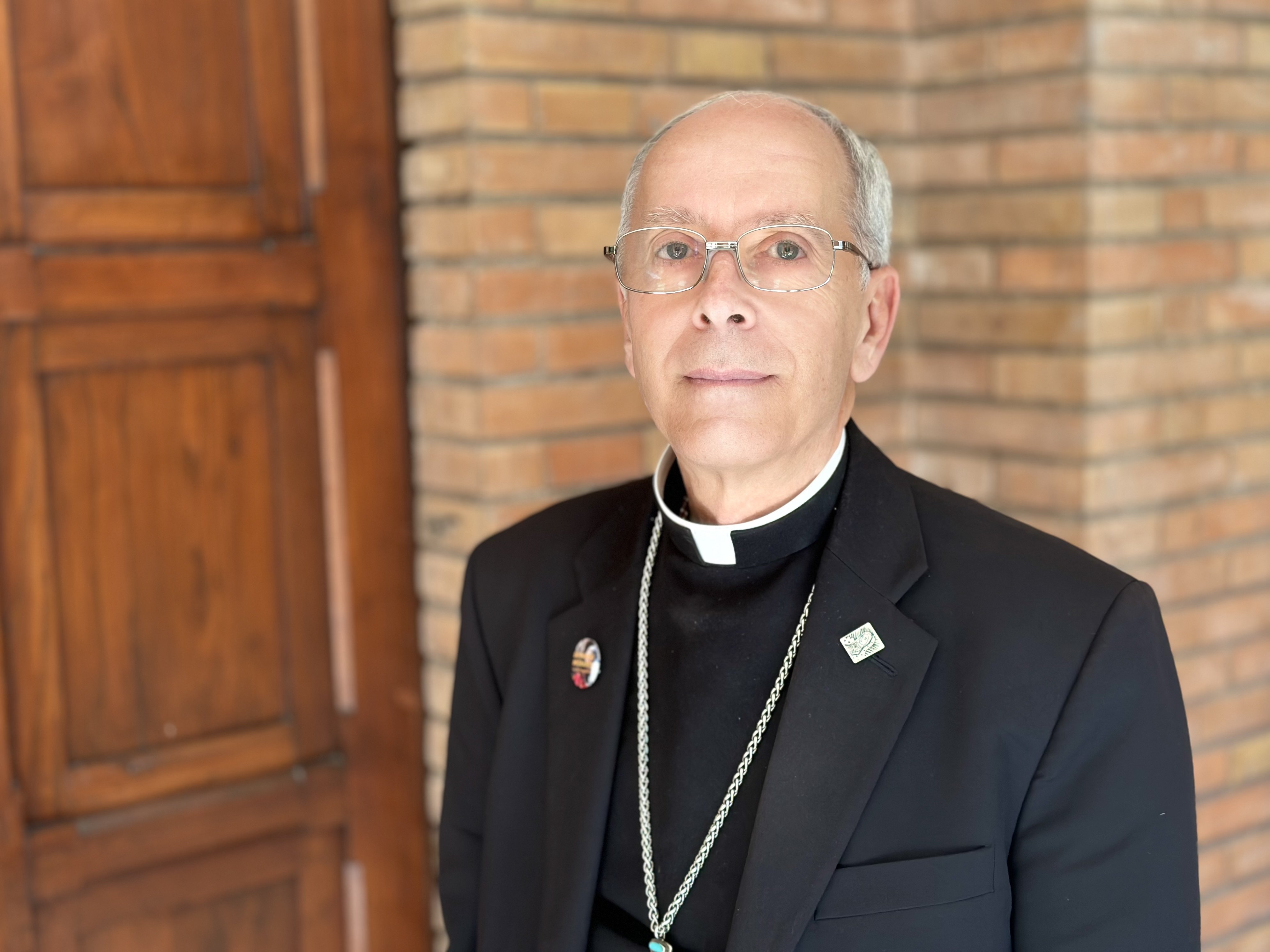April 8, 2020 at 1:40 p.m.
Holy Thursday and an introduction to the Sacred Triduum
In our first reflection, we spent some time looking at Palm Sunday with all the many rich signs and symbols of that special day. We also saw that all the signs and symbols associated with Palm Sunday and what we might call the liturgical drama of that day, are there for a most important reason. They appeal to our head and to our heart, to our thoughts and to our imagination; to remind us in a powerful way of what God has done for us. We also realized that there is more … We are not meant to be like passive onlookers or spectators as the liturgy unfolds, even if we cannot be in church due to all the current restrictions. Rather, we are to be taken up into the drama or mystery, and become very much part of it.
All this is certainly also true of the incredibly deep and rich liturgy of what we call the Sacred Triduum (literally, “the sacred three days”); that is the Holy Three Days of Holy Thursday, Good Friday and Easter Sunday. There are so many signs or symbols during these days, that it can all be a bit overwhelming. Therefore, it is worth stepping back and reflecting on the liturgy of each of the days. However, even before we do this, we need to understand one other key thing. Although we speak of the three days, they are actually one whole event or liturgy. Yes, it is true that each day has its own distinctive flavor and focus, but they are parts of one mystery and one action. It is called the Paschal Mystery; that is the mystery of Jesus’ passion, death and resurrection that brings us salvation. That is one reason why there is no blessing or dismissal at the end of the Evening Mass of the Lord’s Supper on Holy Thursday. At the Solemn Liturgy of the Lord’s Passion on Good Friday, there is a prayer at the end of the liturgy that already points to Easter Sunday. There are three physical days then; but only one mystery and one liturgy and, in a way, one day.
So, in our reflections, let us take each of the days in turn. We can look at all the signs or symbols and see beyond them to the spiritual riches that they contain. We can do this whether we are watching a live-stream version or a recording at home, or whether we look at the different liturgies in our prayer book or missal. The first great event in our holy three days is the Evening Mass of the Lord’s Supper on Holy Thursday Evening. As with Palm Sunday, this liturgy has a particular focus that is then expressed in the various special marks or signs that we encounter during the Mass. We celebrate the institution of the “new covenant” between God and His people, above all in the sacrament of the Eucharist, as well as the institution of the ordained priesthood (those who are called to celebrate this sacrament on behalf of the Church).
So, because we rejoice in this great gift of the Eucharist, the atmosphere during the Mass is one of joy and celebration: for example, with the use of white vestments, or in the ringing of bells during the Gloria. On the other hand, if we were in the church for this Mass in normal times, we would see that two, very familiar signs or marks would be missing. There is no holy water and the tabernacle is empty and open. Our holy three days are about the birth of the church and new beginnings and also continue that Lenten idea of presence and absence. So we begin the three days with no holy water: the new, life-giving water of baptism will be blessed as we celebrate the resurrection of Jesus. We have already had a taste of this absence with the removal of holy water from the fonts in our churches. We long for its return: it will indeed be a sign of new life! Since Holy Thursday is about the institution, or, in a way, the beginning of the Eucharist, we also begin this day with an empty tabernacle.
We should not forget our Readings at Mass as they are, in a way, also signs or symbols. In fact, the readings have been especially chosen: they too point us to the institution of the new covenant in the Eucharist. In the First Reading (Exodus 12: 1-8, 11-14), the Eucharist is pre-figured in the “passing over” (that is Passover) of the angel; that is when the Israelites were freed from their slavery in Egypt. As a sign of this, the Israelites are told to sacrifice a lamb (that puts us in mind of Jesus, the Lamb of God) and put some of its blood on the door as a marker. God’s angel will then “pass-over” that house and not bring death to it.
St. Paul, in the Second Reading (1 Corinthians 11: 23-26), speaks of “handing on” what he has received (his account of the account of the Last Supper and the institution of the Eucharist); but there is also the handing on or over of Jesus to betrayal and death. The Eucharist, we are reminded, is the sacrament of Jesus’ sacrifice for us that brings us life. Later on in the Mass, during the Eucharistic Prayer, we have another sign or mark that echoes this reminder about the nature and purpose of the Eucharist. We have some words that are included in the prayer only on Holy Thursday: “on the day before he was to suffer for our salvation and the salvation of all, that is today, he took bread …”
The Washing of the Feet is perhaps, the sign or mark that many of us most remember about Holy Thursday. It is often a very moving occasion, as we see the feet of various parishioners being washed. As with so many other elements of our Holy Week rituals, it is so sad that we will not be doing this, this year. However, we can still reflect on the symbolism of this special ritual. It is officially called the mandatum because it calls to mind the mandate or command of Christ to love one another.
We are reminded that the Eucharist is intimately bound to love and service. We know of the Eucharist as a real presence of Jesus who is lover and servant. We are commanded or mandated to imitate and live this mystery. As C.S. Lewis wrote: “next to the Blessed Sacrament itself, your neighbor is the holiest subject present to your senses. If he is your Christian neighbor he is holy in almost the same way, for in him Christ … is truly hidden.” The washing of the feet is also linked to baptism (being washed clean), and to the cleansing action of Christ’s sacrifice. The sacrifice of Jesus is made out of unconditional love and obedience: the Eucharist is a real and living sign of this, and we must imitate it in our lives.
After the Mass there is a period of watching in silent contemplation. Again, this year, the Blessed Sacrament will simply be placed in the tabernacle. However, we can still pray at home silently together, keeping vigil together. In our parish, let us try to do that in our individual homes for all or part of the time from 7-8 p.m. on Holy Thursday. We will be joined together in a holy communion. What a great thought and a great prayer! In the church, the altars are stripped and the candles removed or covered. This, for some, symbolizes the stripping of Christ for His crucifixion. Whatever the case, all our symbols for this Mass remind us that the Eucharist is a living and real symbol of the Paschal Mystery; that is the mystery of our redemption.
- Barron: Administration ‘assured’ him detainees’ access to sacraments ‘under careful review’
- Bishops, humanitarian leader urge bold, courageous action at UN climate conference
- Space must be safeguarded for the common good, says Vatican diplomat
- Pope’s prayer intention is for those struggling with suicidal thoughts
- Diocese of Alexandria, La., files for bankruptcy to address abuse claims filed under lookback law
- Thousands of Catholics gather at shrine of Fatima Rani in Bangladesh
- Dick Cheney dies at 84; his power, influence seen as ‘unmatched’ in history of vice presidency
- Mexican church leaders demand action after mayor murdered
- On All Saints’ Day, Black Catholics celebrate heritage, hear call to be pilgrims of hope, holiness
- Mary, mother of Jesus and all believers, is not co-redeemer, Vatican says








Comments:
You must login to comment.